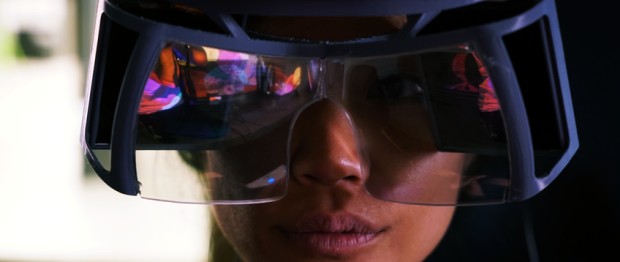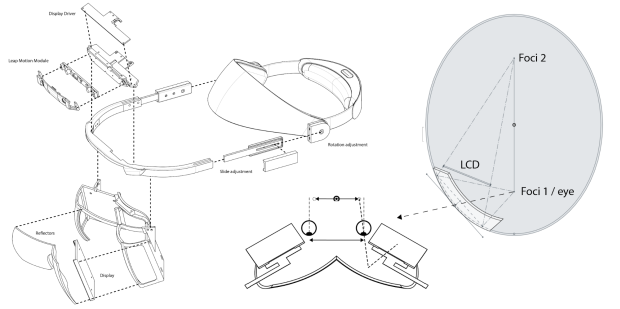Leap Motion shows off low-cost Project North Star AR display
The Analogix display driver pushes the pair of BOE Displays panels at 120 Hz
Leap Motion shipped its first commercial product all the back in 2013. The original Leap Motion controller didn't cause quite the revolution in man-machine interaction the company was hoping for, and Leap shifted to adapting its hand-tracking technology for virtual reality applications back in 2016. In the intervening time, the company has released sensor-mounting kits for the big two PC VR headsets. Now, Leap Motion has taken the wraps off its Project North Star prototype augmented reality display with some bold claims about its capabilities and price tag.

Leap's prototype headset looks ungainly, even for a head-mounted display, but the device packs a pair of 3.5" LCD displays with a resolution of 1600x1440 each. Leap Motion co-founder David Holz says an Analogix display driver pushes the pair of BOE Displayspanels at 120 Hz. The setup looks so bulky because the displays bounce their images off of ellipsoid reflectors to a a visor in front of the user's eyes, overlaying computer-generated imagery on top of physical reality. Most of the headset's parts are made from 3D-printed plastic or acrylic turned on a vibration-controlled lathe and cut with a diamond-tipped bit.
The company says its earlier prototypes used 5.5" displays and larger reflectors to provide the "widest field of view, and the highest-resolution AR system ever made." In these earlier revisions, each eye's FOV is said to be 105° tall and 75° wide. The company's engineers experimented with reducing the FOV in order to reduce the bulk of the headset, settling at a "sweet spot" of 95° x 70°. Holz claims the device's hand tracking works at 150 FPS over a 180° by 180° FOV.
The prototype has a camera culled from a wide-FOV Logitech webcam that provides the video feed needed for Leap's hand-tracking technology. The company says future revisions could have inward-facing cameras to track eye movements, ambient-light sensors, directional speakers, variable-transparency coatings on the visor, and micro-adjustments for dynamic depth-of-field.

Holz says the whole package could potentially be manufactured for under $100 at scale. Leap Motion didn't provide any details about how large that scale would have to be or when it could achieve it. The company says it plans to open-source the design for the most-recent revision of Project North Star next week.
